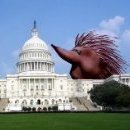Angela Rayner’s Plan for Islamophobia Council Sparks Free Speech Concerns
-
Recently Browsing 0 members
- No registered users viewing this page.
-
Topics
-
-
Popular Contributors
-
-
Latest posts...
-
34
UK Starmer Orders National Grooming Gangs Inquiry After Casey Review Prompts Policy Reversal
Yes; it would be interesting to read. 🙄 -
9,914
Electric Vehicles in Thailand
Please do report back - it seems you have a very open mind so I would be keen to know your impressions. I don't own an EV but I did use one for three days and it converted me, no way would I buy another petrol car so when the time comes to change I will be going EV. My friend has always been pretty negative on them and he drives a diesel (ugh!) Everest. To be fair it's nice inside and has lots of space for him and his family but to me it's filthy (and I have driven it on numerous occasions). We talk cars a lot but he never really believed me about how good EVs are to drive and to live with. He recently drove a friend's Aion Y which is pretty basic but it converted him immediately to the extent he went straight to a BYD dealership to check out the Sealion 7, then got home and listed his Everest for sale. As has been said many many times on here EVs aren't for everyone, ie. if you do long trips every week or you can't charge at home. Anyway, let us know what you decide when the time comes. -
22
USA Trump Hesitates on New Russia Sanctions, Urges Europe to Take the Lead
We don't need to 'believe' anything - it's literally coming out of his mouth or we can read it from some deranged 3 am rant on his so called Truth Social. You Trump apologists keep blaming the MSM when the reality is Trump does most of the heavy lifting himself - with this being a perfect example - did he or did he not say '“Well Europe is saying that, but they haven't done it yet, let’s see them do it first'? No one is putting these words into his mouth (unless you include Putin), so where are the 'lies'? -
34
-
5,475
-
-
-
Popular in The Pub


.thumb.jpg.bc523c85a8d558dbc282dca7a2e602c9.jpg)




.thumb.jpeg.d2d19a66404642fd9ff62d6262fd153e.jpeg)

.thumb.jpeg.42eea318e3350459f0aaaa5460326bca.jpeg)


Recommended Posts
Create an account or sign in to comment
You need to be a member in order to leave a comment
Create an account
Sign up for a new account in our community. It's easy!
Register a new accountSign in
Already have an account? Sign in here.
Sign In Now